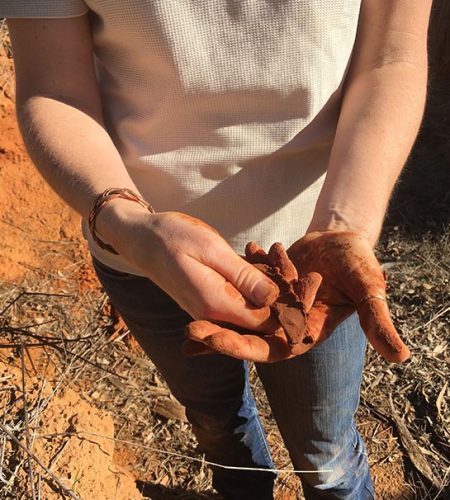This fact sheet supports the Soil CRC panel discussion on ‘Soil health: why it matters’ with panellists Lukas Van Zwieten (NSW Department of Primary Industries), Richard Doyle (University of Tasmania), Kirsty Yeates (Soils for Life) and Jeff Edwards (farmer), that highlighted the challenges around soil health, measuring it, and keeping it.
The Importance Of Soil Health For Agricultural Production
Healthy soils are essential for agricultural production, providing optimal ecosystem services such as nutrient cycling, water retention, and filtration of contaminants. Soil health supports production resilience and profitability by influencing soil structure, water infiltration, carbon sequestration, and other essential processes. Producers cannot change inherent soil capabilities but can improve soil condition through management practices, thereby leveraging available resources more effectively to enhance productivity and system resilience.
Enhancing Soil Resistance And Resilience
The Soil CRC is undertaking projects to improve soil resistance and resilience, crucial for agricultural productivity under changing environmental conditions. Soil resistance refers to the soil’s ability to withstand environmental and human-caused pressures, such as drought, flooding and compaction, without degradation of its physical, chemical, and biological properties and while maintaining its functions. Soil resilience refers to the capacity of soil to recover its functional and structural integrity after experiencing such environmental stresses and disturbances.
These projects focus on enhancing soil functions such as nutrient delivery, water retention, and contaminant breakdown. By investigating cover cropping, intercropping, and soil microbiome transfer, the Soil CRC aims to develop strategies for building healthier and more resilient soils.
Regenerative Farming: Improving Soil Health Through System Interaction
Regenerative farmers focus on improving soil health by fostering interactions within the farming system, emphasising energy supply, ground cover maintenance, and biodiversity enhancement. By promoting mutualistic relationships between plants and soil organisms, regenerative farming aims to enhance productivity while supporting ecosystem functions. Practices such as early destocking, perennial cropping, and plant, animal and enterprise diversification contribute to building natural capital and resilience in agricultural systems.
Measuring Soil Health: Methods And Considerations
Assessing soil health involves understanding its multiple functions and deciding which aspects to measure, such as moisture, nutritional status, and carbon functionality. Farmers should prioritise critical functions for their soil and choose cost-effective, reliable measurement methods. The Soil CRC is exploring various approaches, including wet chemistry, gas exchanges, electrochemical sensors, and improved interpretation of soil moisture data, aiming to provide farmers with accessible and accurate tools for soil health assessment and to improve our understanding of the interrelationship between soil physics, chemistry and biology.
Incorporating Trash To Improve Soil Carbon Retention
Incorporating crop residues, such as sugarcane trash or cereal stubbles, into the soil can improve carbon retention and soil health. While microbial activity may lessen at depth, research suggests that deep placement of organic matter can increase carbon content and provide additional benefits to the soil profile. However, scaling up such practices and ensuring their economic viability remain challenges for farmers, highlighting the need for ongoing research and collaboration.
Benefits Of Conservation Agriculture With Diverse Crops And Pastures
Conservation agriculture, which advocates minimal mechanical soil disturbance, maintaining soil cover and incorporating diverse crops and pastures, can support soil health and organic carbon levels when managed well in a conducive environment and climate. Introducing legume pastures within cropping rotations and minimising tillage can optimise soil biology and carbon retention. However, ongoing research is needed to understand the full extent of soil microbial activity and the long-term benefits of diverse cropping systems.
Monitoring Soil Health
Assessing soil health by measuring, monitoring and understanding soil properties helps landowners to make land-use and nutrient planning decisions that may improve soil performance. The plan highlighted the need for simpler and more practical soil testing methods, as well as the importance of interpreting soil test results.

